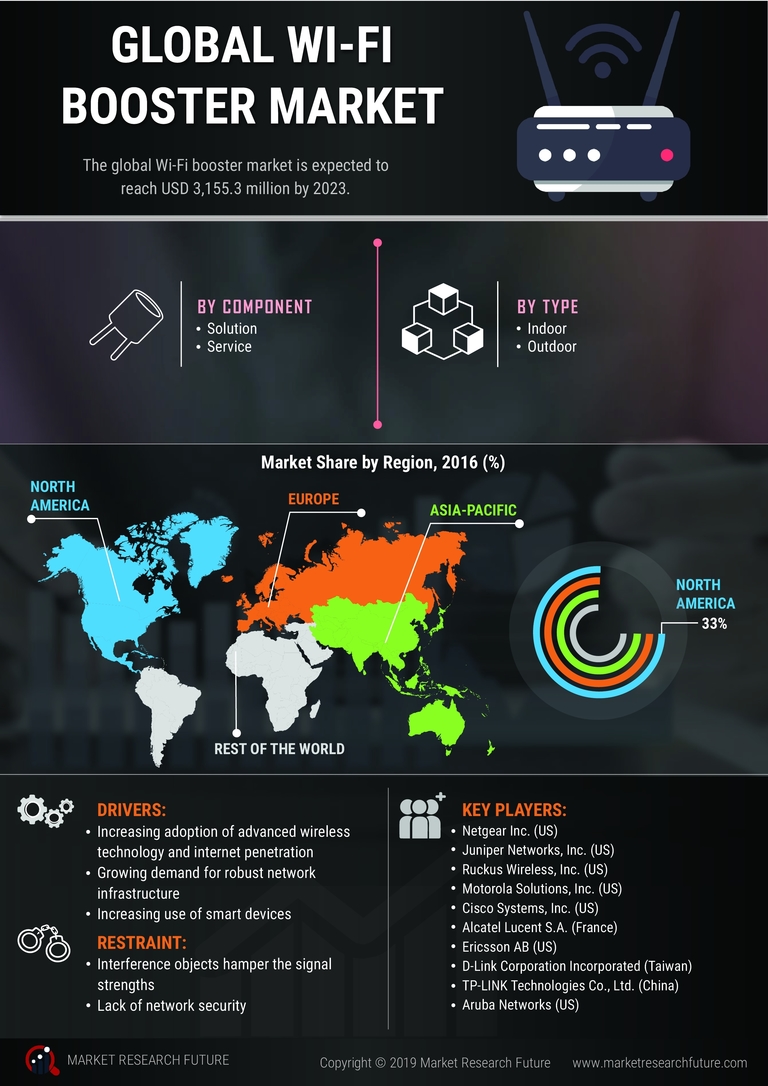Remote Work Trends
The shift towards remote work has significantly impacted the Wi-Fi Booster Market. As organizations embrace flexible work arrangements, employees require reliable internet access to perform their tasks efficiently. Data suggests that remote work has become a permanent fixture for many companies, leading to increased demand for home office setups that include Wi-Fi boosters. These devices help eliminate dead zones and ensure stable connections, which are crucial for video conferencing and collaborative tools. Consequently, the Wi-Fi Booster Market is likely to see sustained growth as more individuals invest in technology that supports their remote work environments.
Rising Internet Usage
The increasing reliance on the internet for both personal and professional activities drives the Wi-Fi Booster Market. As more households and businesses adopt high-speed internet, the demand for reliable connectivity intensifies. According to recent statistics, internet usage has surged, with over 4.9 billion users reported worldwide. This trend suggests that consumers are seeking solutions to enhance their internet experience, particularly in areas with weak signals. Wi-Fi boosters serve as a practical solution to bridge connectivity gaps, thereby expanding their market presence. The Wi-Fi Booster Market is likely to benefit from this growing need for uninterrupted internet access, as users prioritize seamless connectivity for streaming, gaming, and remote work.
Expansion of Smart Devices
The proliferation of smart devices in homes and workplaces is a key driver for the Wi-Fi Booster Market. With the rise of the Internet of Things (IoT), an increasing number of devices require stable internet connections. Reports indicate that the number of connected devices is expected to reach 75 billion by 2025. This surge necessitates robust Wi-Fi networks capable of supporting multiple devices simultaneously. Wi-Fi boosters enhance network coverage and performance, making them essential for households and businesses that rely on smart technology. As the demand for smart home devices continues to grow, the Wi-Fi Booster Market is poised for expansion, catering to consumers' needs for enhanced connectivity.
Technological Advancements
Technological advancements in wireless communication are propelling the Wi-Fi Booster Market forward. Innovations such as Wi-Fi 6 and mesh networking systems offer enhanced speed, capacity, and coverage, addressing the evolving needs of consumers. These advancements enable users to connect more devices without compromising performance, which is increasingly important in today's digital landscape. The introduction of advanced features, such as automatic updates and improved security protocols, further enhances the appeal of Wi-Fi boosters. As technology continues to evolve, the Wi-Fi Booster Market is likely to experience growth, driven by consumer demand for cutting-edge solutions that enhance their internet experience.
Increased Streaming Services
The rise of streaming services has transformed how consumers access entertainment, thereby influencing the Wi-Fi Booster Market. With platforms like Netflix, Hulu, and Disney+ gaining millions of subscribers, the demand for high-quality streaming experiences has never been higher. Users often encounter buffering and connectivity issues, particularly in larger homes or areas with weak signals. Wi-Fi boosters address these challenges by extending coverage and improving signal strength, making them a valuable addition for streaming enthusiasts. As the number of streaming subscribers continues to grow, the Wi-Fi Booster Market is expected to thrive, driven by the need for uninterrupted access to digital content.

















Leave a Comment